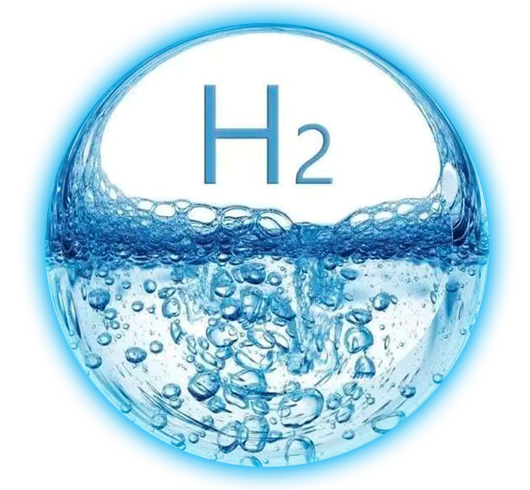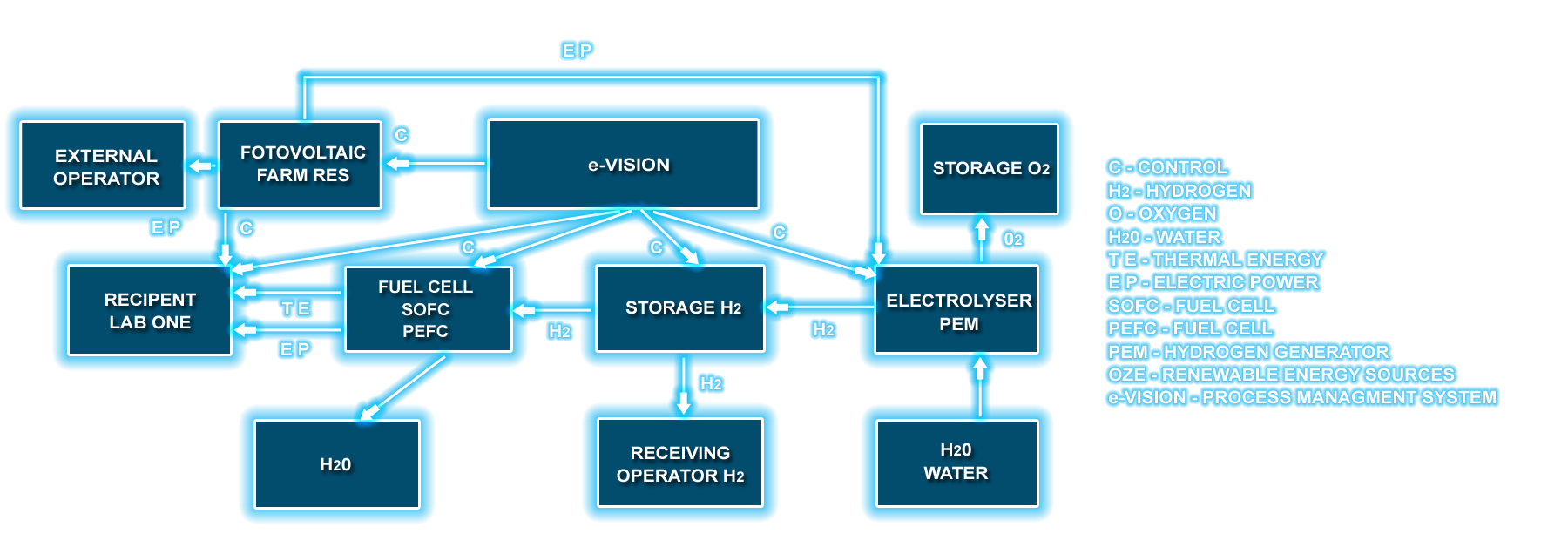
… THE FUTURE IS THE COLOR OF HYDROGEN
You have probably heard a lot about renewables and the tools to harness them, such as wind farms or PV power plants, but have you heard about hydrogen and its use? Renewables cannot provide a constant supply of energy because the wind doesn’t always blow and the sun doesn’t always shine, but if we convert the surplus energy generated on windy or sunny days into hydrogen, the gas acts as an energy storage battery that we can use when the supply of renewable energy is low or demand is higher than it is.
Energy storage in hydrogen is crucial to the development of the renewable energy market, and using this element for storage could reduce the cost of both and revolutionise the energy market. Hydrogen can stabilise the inherently variable output of renewable energy sources such as solar, hydro and wind while having the ability to store huge amounts of electricity over days, weeks, months.
Currently, the dominant technology for producing hydrogen is from methane. The level of acceptance for this solution generates relatively high CO2 emissions. According to the International Energy Agency (IEA), approximately 70 million tonnes of hydrogen are currently used worldwide, mainly for oil refining and in the chemical industry. The accelerating decarbonisation process and the need to find additional low-carbon energy sources will strengthen the market for hydrogen production. Its value could almost triple by 2050, according to a report by consultancy BAIN & COMPANY. Market growth will be driven by falling production costs and rising CO2 emission allowance prices, as well as government subsidies for the deployment of hydrogen solutions… The accelerating decarbonisation process and the need to find additional low-carbon energy sources will strengthen the market for hydrogen production. Its value could almost triple by 2050, according to a report by consultancy BAIN & COMPANY. Market growth will be driven by falling production costs and rising CO2 emission allowance prices, as well as government subsidies for the deployment of hydrogen solutions.
Support for technology development in this sector is already being offered by the European Union, which has announced its hydrogen strategy for Europe, claiming that hydrogen is an important part of the solution to achieve the 2050 climate neutrality goal. As part of the European green deal, it also wants to introduce the euro as a global reference currency for hydrogen trade, just as the US dollar is the currency for oil. Iceland, due to its unique situation where electricity is cheaper than the price of hydrocarbons, has committed to becoming the world’s first hydrogen economy by 2050. In Poland, implementations are currently underway on the government’s project ” Polish Hydrogen Strategy to 2030 with an Outlook to 2040″. In view of this, we have decided to set up the Future Solutions Research and Development Centre, in which we want to dedicate ourselves to working on issues of green energy and hydrogen technology in the broadest sense.
MISSION
Hydrogen has the potential to become an important part of the energy mix. In our view, it is one of the most promising solutions in the low-carbon energy market that will make it easier to achieve climate neutrality. Green hydrogen is mentioned as one of the key energy carriers that can contribute to the European Green Deal. Hydrogen cells produce electricity through the chemical conversion of hydrogen and oxygen , while water produces hydrogen through electrolysis. Once used for space exploration, in the present day it is used more commercially for vehicle propulsion, heating and electricity generation, among other things.
Therefore, the mission of the Research and Science Centre will mainly be to study:
- Electrolysis process and its efficiency
- Application and testing of graphite electrodes
- The use of graphene in hydrogen technology
- Energy storage techniques and discharge parameters
- Long-term and large-scale energy storage
- Biological production of hydrogen
- Hydrogen bonding techniques for transport
- Intelligent energy management systems
- Smart energy consumption metres
- Modern electric charger systems
- IT support in the general energy sector

LAB ONE GNIEWINO
The company plans to purchase a partly acquired land in Gniewino, ul. Mostowa, on which the LAB ONE research unit and ultimately the company’s headquarters will be built. The property in Gniewino intended for investment is industrial land with an area of 30100 m2. According to the local plan passed by the Gniewino Commune Council, the property is assigned the E,K,O,W,C,G symbols, which allows for placing teletechnical infrastructure, electromagnetic, gas network, production of energy gases. The property is crossed by a sewage system and a gas network. The company plans to build an office and research building on the site, an electricity production complex in the form of a photovoltaic farm connected to an electrolyser.
A simplified diagram of the Solaris Hydrogen unit for The LAB ONE unit.

SOLAR FARM
The farm will be responsible for generating energy for the LAB ONE photovoltaic plant located in the research center itself… (more…)
H2 GENERATION SYSTEM
LAB ONE’s main operational area is to be production of green hydrogen and research on its technologies… (more…)
LAB ONE GNIEWINO
The area of the LAB ONE Research and Development Center has been initially estimated for 1,500 m2… (more…)


